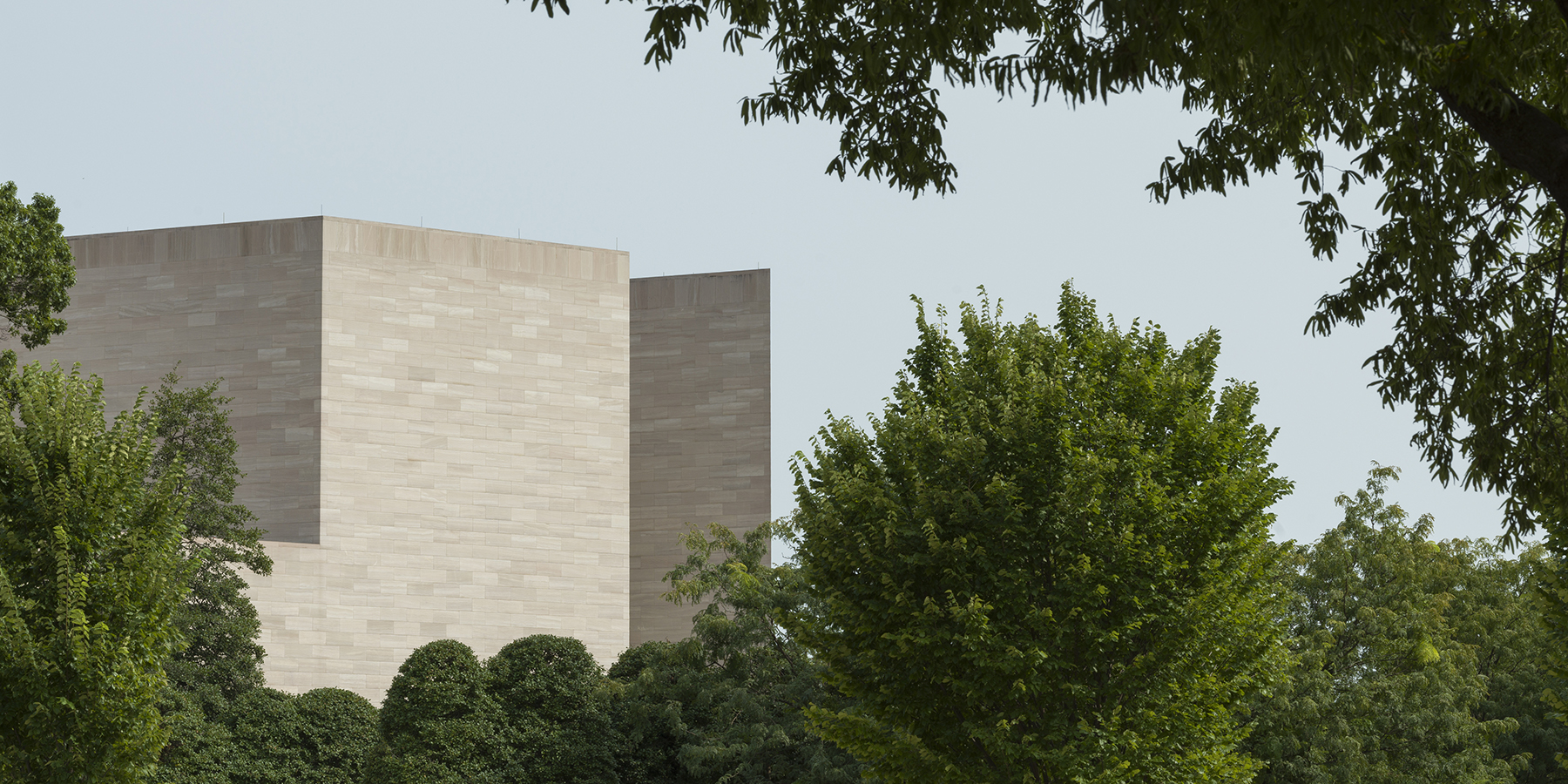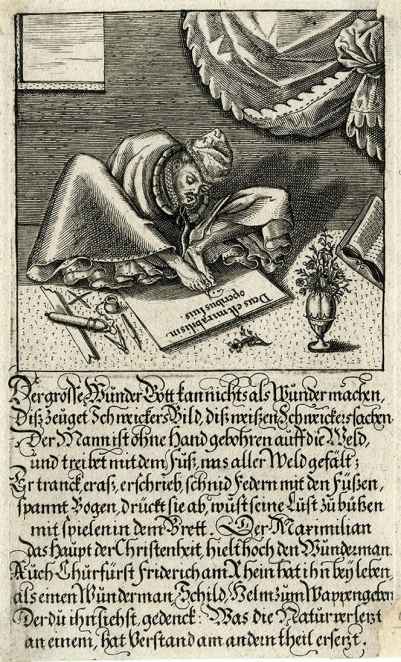An engraved broadsheet by an unknown 17th-century artist portrays the famous German calligrapher Thomas Schweicker (1540–1602) of Schwäbisch Hall. We glimpse him beneath a raised curtain, richly clad in a fur hat, lace ruff, and heavy robe, with quills and writing tools scattered by his side. He hunches over a tablet with a Latin inscription that states: “God is remarkable in his works.” A final ink flourish draws the eye to his pen, focusing our attention on its placement between the artist’s working feet. The Latin inscription becomes a double statement on artwork and artist alike.
Born without arms, Schweicker rose to fortune and favor through his ability to create beautifully lettered artworks with his feet, a number of which still exist today. Yet, the illustration portrays Schweicker’s physical difference with a subtlety that verges on dissimulation. Curtain and cloak orchestrate moments of exposure and concealment that gently culminate in the meeting of limb and script. Meanwhile, a rhyming poem beneath the image hails Schweicker as a vessel of divinely inspired creation. It recounts his talents and the rewards of the nobles who witnessed them, ending with a direct address to the beholder: “you who see him, think / what nature loses in one part, understanding has replaced on the other.” This print positions bodily “loss” as a hermeneutic of artisanal knowledge, which in turn serves as proof of a balanced, rational universe that gives and takes in equal measure.
This exhortation to witness and reconsider an image of bodily loss lies at the core of my dissertation; the quest to equalize “loss” with “understanding,” as articulated in Schweicker’s poem, plays out to variegated ends within portraiture’s expanded field. Schweicker’s portrait joins a range of rare and understudied prints and drawings from early modern German-speaking lands of individuals whose appearances were not considered “whole.” My research demonstrates the diverse ways that these objects triangulate the affective relationships among makers, subjects, and beholders. As the era’s chief documentary technologies for recording the particular, the marginal, and the actual, paper-based media allowed artists to bear witness to individual scenarios of physical loss with new immediacy, and to push the boundaries of visual reportage.
The Protestant Reformation would also reshape responses to the theme of bodily loss over the course of the 16th and early 17th centuries. Covering the Reformation’s span from 1500 to circa 1650, each of my dissertation’s four chapters engages this theme’s fugitive emplacement in an image theory that was straining under the extreme pressure of religious schism and confessionalization. A great body of scholarship has attended to early modern bodily alterity in three core pictorial traditions: scenes of Christomorphic martyrdom or suffering; “monstrous births,” which were viewed as prodigies or omens of God’s will; and portraits of individuals with hirsutism, dwarfism, and other inherited differences, who were collected as living spectacles in European courts. While Schweicker’s “marvelous” image relates to this latter category, his status as an autonomous, working artisan reflects my project’s goal of examining early modern German-speaking artists’ cultural, practical, and aesthetic encounters with bodily integrity on their own terms.
The first part of the dissertation treats Albrecht Dürer’s aesthetic thinking on the differences between bodily wohlstand (harmony) and ungestalt (deformity) in his writings on human proportion. My own conceptions of “loss” and “lack” attempt to articulate prevailing early modern perceptions of disability and disfiguration that challenged the pictorial ideals of corporeal unity and wholeness, symmetry and proportion, uprightness and mobility, and health and strength in art. Far exceeding the historical categories of curiosity, monstrosity, and mirabilia, my project devotes extensive attention to scenarios of social precarity whose subjects stood far outside the margins of an art-historical canon anchored to expressions of power, honor, and virtue. Thus, Schweicker’s highly positive portrait serves to balance those of war crimes, state judicial punishments, and sudden diseases. This project asserts that although disabled and “disfigured” humans were viewed as outside the norms of society, the visual record reveals close attention to more ubiquitous and everyday scenarios of physical crisis. Artists Urs Graf, Lucas Cranach the Younger, and Tyrolean printer Andreas Spängler engaged consciously with the aesthetics and affective potential of loss in their immediate surroundings, on both sides of the confessional divide.
My fellowship allowed me to continue crucial primary source research and translation for these objects, many of which have received little scholarly attention, much less acceptance as “art.” This research attempts to expand definitions of early modern portraiture and to promote the study of disability and physical alterity within early modern art history, which lies at the root of social, political, and aesthetic Western values.
[Yale University]
Robert H. and Clarice Smith Fellow, fall 2020
Sara Lent Frier has joined the curatorial team at the Lucas Museum of Narrative Art in Los Angeles.

